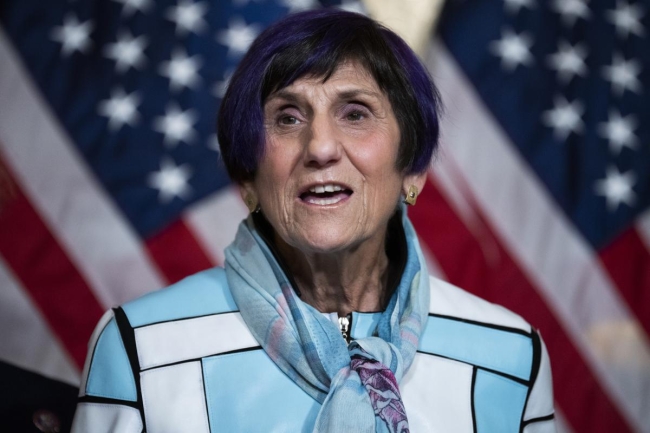You have /5 articles left.
Sign up for a free account or log in.

House Appropriations Committee chair Rosa DeLauro, a Democrat from Connecticut.
Tom Williams/Getty Images
Congress reached an agreement Thursday to temporarily fund the federal government, once again delaying the annual appropriations process and locking in the Trump administration’s higher education funding levels for at least the next two months.
With passage of the stopgap funding bill, Congress met its Friday deadline and averted a government shutdown. The House and Senate now have until Feb. 18 to reach an agreement on the language of the 12 appropriations bills that fund activities by the federal government, including at the Department of Education.
“While I wish it were earlier, this agreement allows the appropriations process to move forward toward a final funding agreement which addresses the needs of the American people,” House Appropriations Committee chair Rosa DeLauro, a Democrat from Connecticut, said in a statement announcing the agreement.
The delay until February for a final funding agreement is longer than in recent years, but not dramatically outside of what’s typical, said Terry Hartle, senior vice president for government relations and public affairs at the American Council on Education. Congress is supposed to have an agreement on appropriations by the time the new fiscal year begins on Oct. 1, but that rarely happens.
“They usually want to wrap it up before the end of the calendar year, because at the end of December, we’re already 25 percent of the way through the federal fiscal year,” Hartle said. “But sometimes, as in the current contentious political climate, they can’t do it. And if they can’t do it, kicking the can down the road is always the preferred option.”
The House Appropriations Committee approved its draft budget for higher education spending in July. The legislation provides $27.2 billion for federal student aid programs and another $3.43 billion for higher education programs. The bill would increase the maximum Pell Grant award by $400 for the 2022-23 academic year and provide minority-serving institutions—including historically Black colleges and universities, Hispanic-serving institutions, and tribal colleges and universities—with a total of $1.13 billion.
However, the Senate has yet to make any substantial progress on its appropriations proposal since the committee released a draft in October. The upper chamber’s bill mirrors the priorities of the House’s version, though with slightly lower investments. Both versions align closely with President Biden’s budget request.
Pushing the appropriations process to February won’t mean much for higher education in the interim, and even if the legislation passes four months behind schedule, the impacts will be minimal. It may make it more difficult for agencies like the National Institutes of Health, the National Endowment for the Humanities and the National Science Foundation—for all of which Democrats have proposed budget increases—to get money out the door for grant programs, since they’d have less than a year to do so.
“It underscores why it’s so critical for Congress to complete its work and for the research agencies to know the funding levels for the fiscal year that they will have to support the research that grows our economy,” said Craig Lindwarm, vice president for governmental affairs at the Association of Public and Land-grant Universities. “In order to realize the increases that are in the FY22 appropriations bills as they currently exist, Congress has to finish its job.”
Other programs, like the Pell Grant program, shouldn’t be affected—if the $400 increase is enacted, it should still go into effect by the next academic year, and students shouldn’t have any problems receiving it.
Sometimes, Congress makes slight changes to existing spending in passing the temporary funding measure, and that was the case for the bill passed last week. Lawmakers added $7 billion to go toward helping refugees from Afghanistan resettle in the United States, which does involve parts of higher education, noted Hartle.
“That provision is of interest to some colleges and universities that are involved in trying to help the State Department with those resettlement efforts,” Hartle said. “We were pleased to see that was included.”




